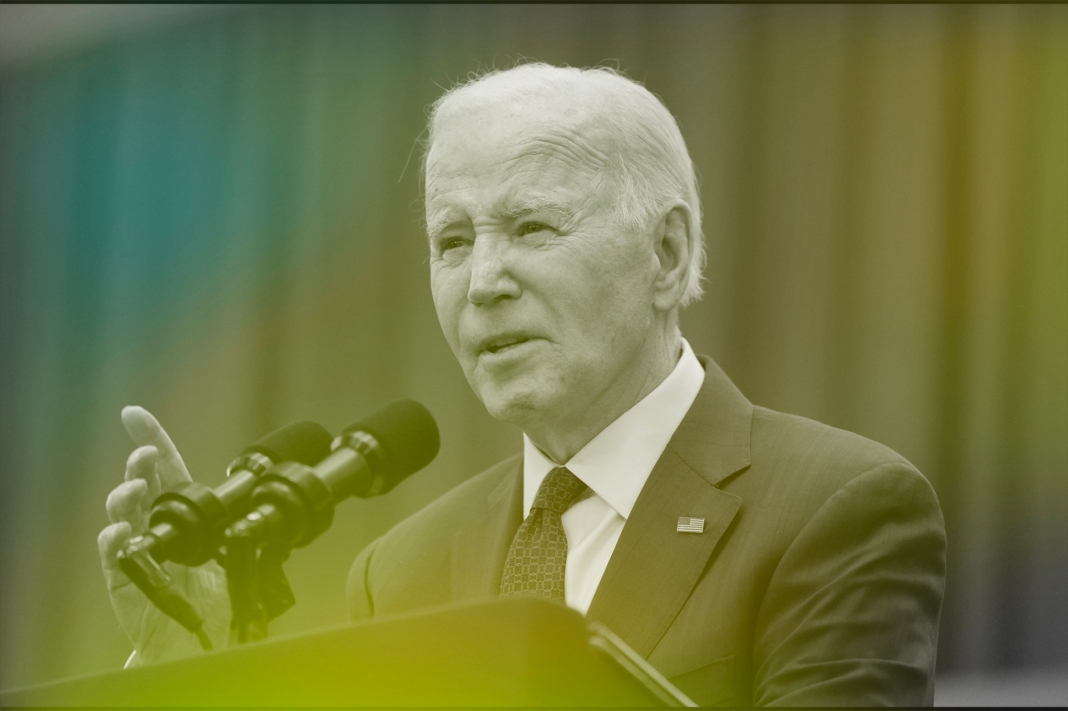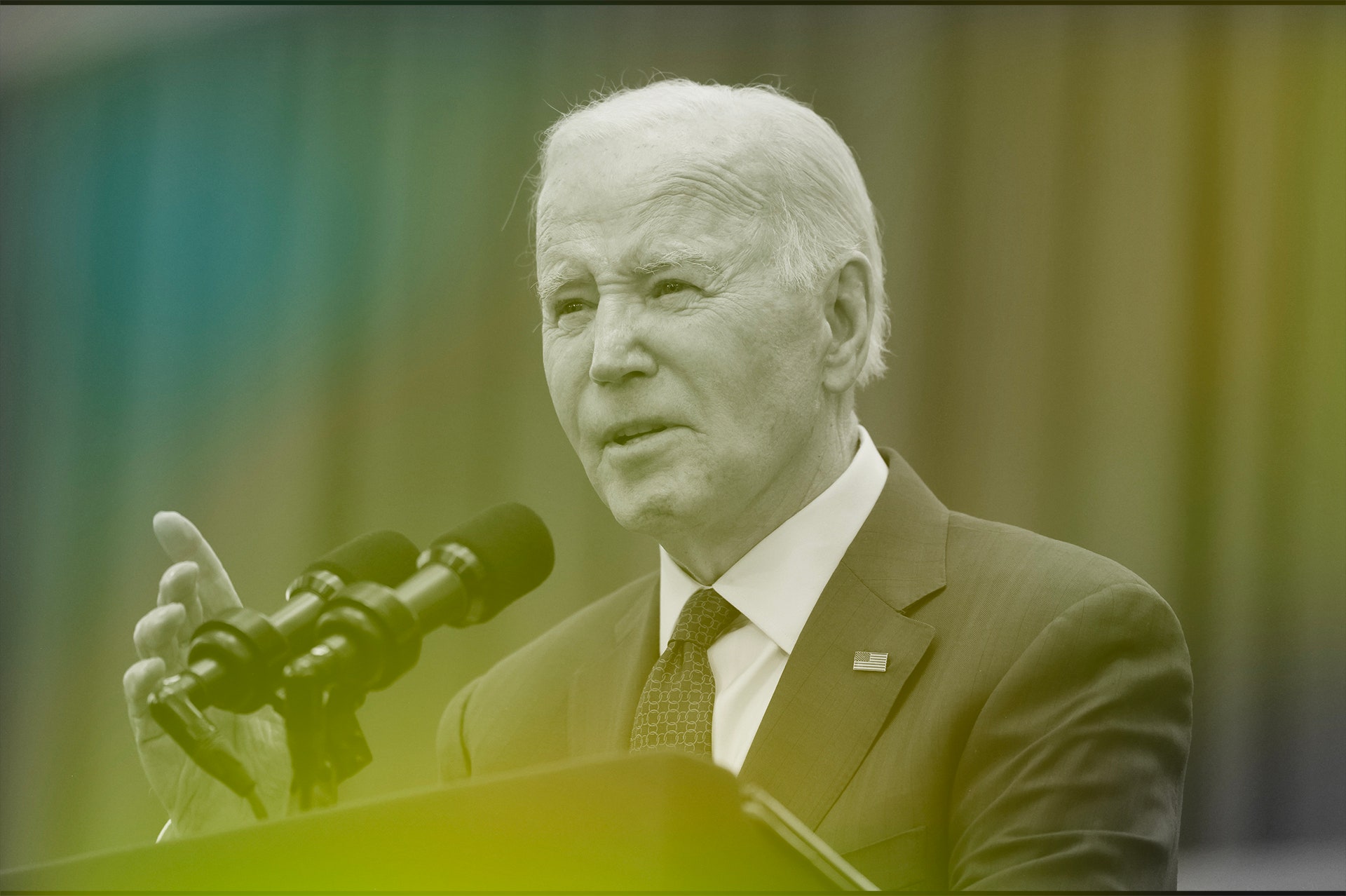An Explicitly Redistributive Budget for an Election Year
On Monday, President Joe Biden released a $7.3-trillion budget proposal for the fiscal year 2025, featuring tax increases on corporations and the wealthy, a new tax credit for first-time home buyers, and other measures that he had alluded to during his combative State of the Union speech last week. Because of the perennial gridlock on Capitol Hill, budgets rarely influence actual spending levels these days, but they are still important political documents, especially in an election year: Biden’s budget proposal is effectively a draft of his 2024 policy platform.
The key political takeaway is that the White House is determined to frame the upcoming contest between Biden and Donald Trump as a choice between a Democrat fighting for the American middle class and a Republican stooge for the plutocracy. In economic terms, the budget amounts to an effort to expand the social safety net and, simultaneously, reduce the federal deficit by raising tax obligations for the richest two per cent of American households—and particularly the very, very wealthy, who have prospered greatly in the past few decades.
The centerpiece is the various proposed tax increases on corporations and the very wealthy, which together would raise more than $4.5 trillion in the course of ten years, according to estimates from the Treasury Department. Some of this money would be used to fund new child-care and preschool programs, restore the child-tax credit, expand student-debt reduction, and reduce health-care costs; the rest would go toward cutting the deficit, which the White House estimates at 6.6 per cent of G.D.P. in fiscal 2024. Regardless of the individual merits of these proposals, they draw a clear distinction between Biden and Trump, whose economic platform appears to consist of making permanent the big tax cuts for the rich and corporations that were introduced in the Republican Tax Cuts and Jobs Act of 2017, and of imposing hefty tariffs on all imported goods, which would raise prices for American consumers.
Biden has proposed many of the specific items in the budget before. (Goldman Sachs headlined its instant analysis: “Not Much News in Biden Budget Proposal.”) One genuinely new idea is to impose a minimum federal income tax of twenty-five per cent on the wealthiest 0.01 per cent of U.S. households—those with assets of more than a hundred million dollars. Many households in this bracket receive most of their income in the form of capital gains, dividends, and interest, all of which are often taxed at lower rates than ordinary wage income, and sometimes aren’t taxed at all. In a fact sheet accompanying the proposal, the White House noted that “many of these wealthy Americans are able to pay an average income tax rate of just 8 percent on their full incomes—a lower rate than many firefighters or teachers.” (This figure came from a study of the tax years 2010 to 2018 that was carried out by two economists at the Office of Management and Budget, Greg Leiserson and Danny Yagan.) In the past decade or so, Bernie Sanders, Elizabeth Warren, and other Democrats have proposed a variety of methods to tax the ultra-wealthy, and the proposal for a statutory minimum is the latest stab at it. According to the Treasury Department, it would raise more than five hundred billion dollars in ten years.
The budget contains a number of different proposals to roll back elements of the 2017 Republican tax cuts, many of which are due to expire at the end of 2025. The G.O.P. legislation cut the top marginal income-tax rate from 39.6 per cent to 37 per cent, reduced the top rate on capital gains to twenty per cent, slashed the corporate income-tax rate from thirty-five per cent to twenty-one per cent, and introduced an even lower rate of twenty per cent for the owners of certain so-called pass-through entities, such as partnerships, S corporations, and sole proprietorships. The White House proposal addresses all of these changes. It would move the top income-tax rate back to 39.6 per cent; make households earning more than a million dollars per year pay taxes on their capital gains at that same rate; raise the corporate tax rate to twenty-eight per cent; and force wealthy recipients of pass-through income to pay a surtax of five per cent.
These measures would be accompanied by others designed to raise taxes on big businesses and high earners, including an increased minimum corporate tax rate of twenty-one per cent for corporations that make more than a billion dollars in profits. (The 2022 Inflation Reduction Act of Biden’s budget introduced a minimum rate of fifteen per cent.) The budget proposals would also make it harder for corporations to shelter their profits in foreign tax havens by, for instance, moving their headquarters abroad. Taken together, the reforms of business taxation at the domestic and international level would raise more than $2.7 trillion in ten years, according to the Treasury Department. Even in a U.S. economy where G.D.P. now stands at about twenty-eight trillion dollars, that’s far from chump change.
The new budget proposal, if enacted, would also close down two more long-standing quirks in the tax code which benefit the extremely wealthy, and which have only survived this long because the political system has been captured by financial interests. One of them is the notorious carried-interest loophole, which allows hedge-fund and private-equity managers to categorize much of their fee income as profits, thereby enabling them to defer payment of taxes, and to eventually pay tax at much lower rates than ordinary taxpayers. The other loophole is the so-called step-up-in-basis provision, which enables rich people to pass down their fortunes without their heirs having to pay capital-gains tax on assets that have often greatly appreciated in value throughout the years. Under the Biden proposal, this loophole would be eliminated for bequests larger than five million dollars, or ten million for married couples, with an exception for family-owned farms and other businesses that are passed down to family members who continue to run them.
Speaking in New Hampshire on Monday, Biden defended his proposals on the grounds of fairness. “I’m a capitalist, man,” he said. “Make all the money you want. Just begin to pay your fair share of taxes.” The Trump campaign responded to the President’s budget by claiming, without any evidence, that it would lead to the immediate elimination of a million jobs. This statement was overshadowed, however, by the Trump campaign’s urgent efforts to row back a suggestion by the former President that he may be open to cutting Social Security, Medicare, and Medicaid. Asked during an interview on CNBC what he would do to rein in entitlement spending and reduce the national debt, Trump said: “So, first of all, there is a lot you can do in terms of entitlements, in terms of cutting.” After the Biden campaign leaped on these words, Trump’s campaign insisted he had been talking about “cutting waste and fraud,” which he’d also mentioned during the interview.
Obviously, there’s a long way to go until November, and one day’s back-and-forth may not count for much, ultimately. But the Biden campaign would be delighted to spend the next eight months debating whether the economic priority should be expanding the federal tax base by forcing the top one or two per cent of households to pay more, as Biden has suggested, or cutting entitlement spending and preserving the tax cuts for the rich which Trump, Paul Ryan, and Mitch McConnell pushed through on a party-line vote in 2017. ♦
Source: newyorker.com




